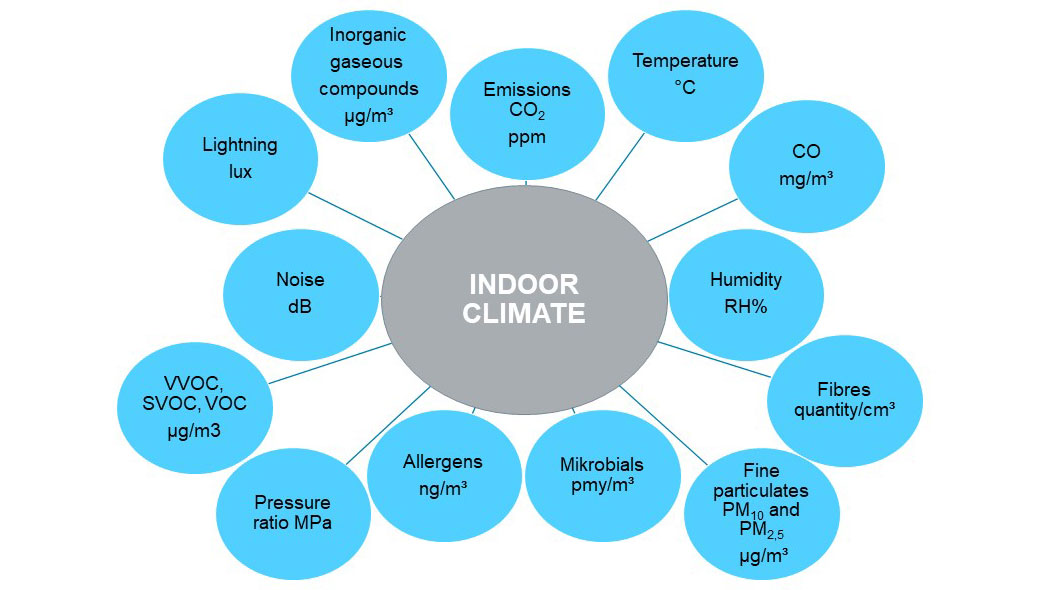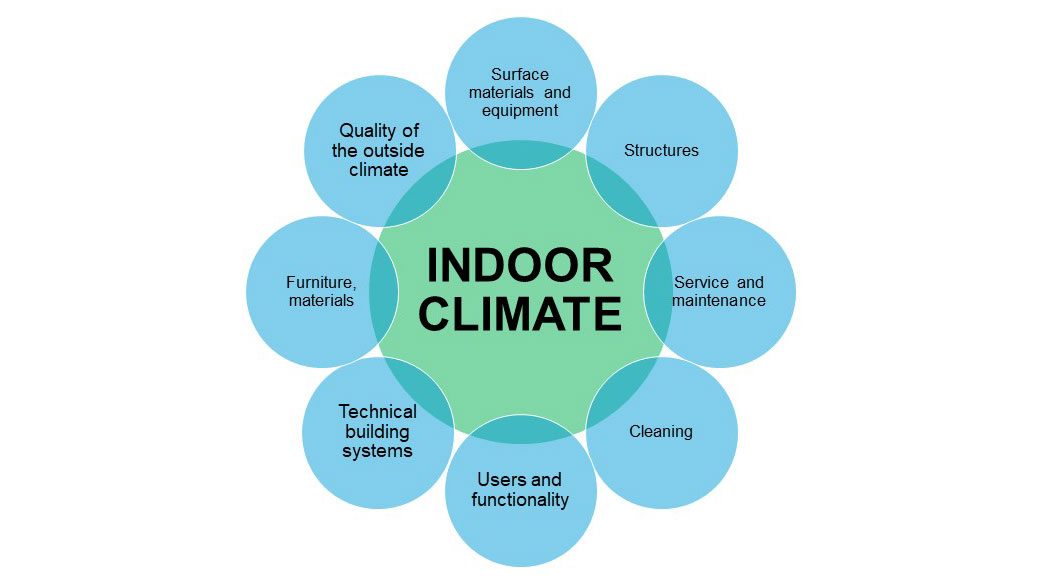Sustainable data centers as a service
- Work
- Construction
- Blog
- Premises
- 4/14/2020
High-quality indoor air through long-term planning
Functional and enjoyable working environments are comprised of several elements, and indoor climate is one of the most important of these from the point of view of user health and safety. The elements that affect indoor climate are also numerous.

Many cities and municipalities are frustrated with indoor air issues in public buildings and the unexpected costs of correcting the situation, not to mention the human effects.
Often, the finger is pointed at construction companies and the construction industry at large. Sure enough, mistakes have been made, but responsible professionals have developed their construction processes and learned from past mistakes. In addition, customers have adopted alternative project models in order to achieve better quality of construction. The persistent problems with indoor air cannot be accounted for only by design or construction mistakes, but attention should be turned to the responsible ownership and maintenance of properties.
Looking at the entire life cycle
In our opinion, the solution is to look at the processes and procedures during the property’s entire life cycle. What is the role of the property owner or maintenance provider? What do the users do when they notice a deviation? How to use the special expertise of consultants, designers and contractors to analyse and solve potential problems?
YIT’s answer to these questions is the life cycle model. In addition to design and construction, life cycle projects cover the maintenance of the building during the service period that is specified in the agreement. Responsible maintenance and a carefully planned use of premises play a key role in the management of indoor conditions. In our view, maintenance should be professionally managed and maintenance tasks should be specified and planned separately for each property. The maintenance providers and the users of the space must know the key factors affecting the conditions and their own role in enabling a high-quality indoor climate. Deviations must be taken seriously, analysis and repair must start immediately, and affected parties must receive sufficient and timely information.

Figure 1: Indoor climate conditions, measurable factors
Positive experiences of the model
Our customers have positive experiences of the life cycle model. It has improved budget reliability, because life cycle projects do not have any repair backlog. The outcome is comfortable, healthy premises and maximum user satisfaction. We have life cycle projects in, for example, Hollola, Kuopio, Oulu, Parkano, Porvoo and Pudasjärvi.
Life cycle projects help to develop procedures and processes. A good example of this is the repair and removal of floor surface at the Martti Ahtisaari school in Kuopio. Cleanliness and moisture were managed according to the regulations during the construction, but the moisture concentration of the delta beams was surprisingly high, which resulted in condensed moisture under the dense plastic membrane surface. The moisture chemically reacted with the glue, damaging the plastic and causing indoor air symptoms to the most sensitive individuals.
Based on an overview of the symptoms, we quickly started comprehensive examinations of the building with indoor air specialists. Based on the results, we repaired the plastic membrane structures that were easily damaged. During the process, we cooperated closely with the multidisciplinary indoor air working group and shared information with the school personnel, parents, local residents and the city’s representatives. We also prepared a follow-up programme for the building in order to ensure the quality of the repairs. The situation was under control. After that incident, we have implemented several new life cycle projects in Kuopio, such as schools in Jynkkä, Karttula (the Kissakuusi school) and Hiltulanlahti.
Is it worth it?
Good indoor air conditions require managing multiple aspects of the property throughout its life cycle. Safety and healthfulness must be taken into account in the planning stage, as well as in the selection of structures, materials, equipment and systems. During the construction, even the smallest details receive careful attention, and we use quality assurance methods to monitor compliance with the implementation instructions. At the implementation stage, the technical building systems are configured on the basis of the plans and needs, and the realisation of these is ensured through quality assurance methods. The premises should only be used for the purposes specified in the original plan, and good property maintenance practices must be followed. The necessary maintenance work must be performed timely as the building becomes older.

Figure 2: The indoor climate is affected by these factors
We strongly believe that the use and maintenance of properties should be led and managed as professionally as construction projects. The users and maintenance providers must be familiar with the functional scope of the building, the purpose of the technical systems, the structures that require care and maintenance and the unit’s responsibility for reporting observed deficiencies.
Few organisations have the necessary skills and resources for managing all of these areas, which makes the life cycle model such a good solution. When professionals are responsible for maintenance, using existing and proven operating models, the property remains functional and in good order even after the service period. Each of the economic and human perspective, health and safety have been duly considered.
What about old buildings and new business premises that are constructed using other project models? Or residential buildings?
In the case of old buildings, pipe renovations offer an opportunity to affect indoor air. YIT Talon Tekniikka ensures, for example, efficient ventilation, the cleanliness of ventilation ducts and the sweeping of flues in connection with pipe renovation projects, as specified in the project plan. If necessary, YIT can also modernise the ventilation system to make it more efficient.
YIT uses proven materials and good building practices in the construction of new apartments and business premises. We are committed to the Kuivaketju-10 dry chain management programme, the aim of which is to ensure that all structures are dry before the installation of surface materials Well-designed mechanical ventilation that filters both exhaust and supply air ensures high-quality indoor air for the residents. When the filters are replaced as instructed in the maintenance manual, the ventilation system remains effective for years. Most of our housing units are monitored remotely at all times, which means that the control room notices possible problems with the conditions or technical systems and addresses them immediately.
Long-term cooperation yields the best result
We would like to have good indoor air practices in the construction industry, for sharing experiences of effective and ineffective solutions to indoor air-related aspects. We must know the mistakes in order to avoid them!
Purchasing maintenance services through competitive bidding does not motivate companies to take responsibility over the long term. The best outcome can be achieved through partnerships that are based on trust. In addition to the life cycle model, alliances, which are also becoming more popular, offer a way of enhancing cooperation and communication in large projects.
Taking the health aspect and indoor air monitoring into account at the design stage, and managing properties professionally and over a long time frame, benefits everyone.
Mika Kukkonen
Building Health Expert, YIT



